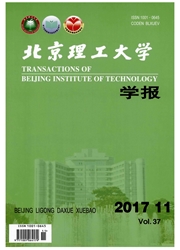

 中文摘要:
中文摘要:
针对低阻硅TSV热力学研究的空白做出了相应的仿真分析.首先介绍了低阻硅TSV转接层的加工工艺,接着基于实验尺寸,在350℃工艺温度下,模拟了低阻硅TSV的涨出高度及应力分布.不同于铜基TSV,低阻硅TSV的涨出区域主要集中在聚合物绝缘层的上方.为了减小低阻硅TSV的涨出高度及热应力,分别对工艺温度、表面SiO_2厚度、低阻硅TSV的直径、高度、间距和BCB绝缘层厚度进行了变参分析.结果表明,减小BCB绝缘层的厚度及高度以及增加表面SiO_2厚度是抑制低阻硅TSV膨胀高度及减小热应力的有效方法.
 英文摘要:
英文摘要:
This paper focuses on thermal mechanical analysis of low resistivity silicon through silicon via(LRS-TSV),since there are few researches on it.Firstly,the process flow for LRSTSV based interposer was introduced.Then based on experimental dimension of LRS-TSV,protrusion height and thermal stress of LRS-TSV were simulated under 350℃.The simulation result shows that,compared with copper based TSV,protrusion area of LRS-TSV are mainly upon polymer insulation.To decrease protrusion height and thermal stress of LRS-TSV,factors such as process temperature,thickness of top SiO_2 layer,LRS-TSV diameter,height,space and thickness of insulation were investigated respectively.From results,it shows that decreasing the thickness and height of insulation,increasing thickness of top SiO_2 layer are effective solutions to reduce the protrusion height and release thermal stress.
 同期刊论文项目
同期刊论文项目
 同项目期刊论文
同项目期刊论文
 期刊信息
期刊信息
